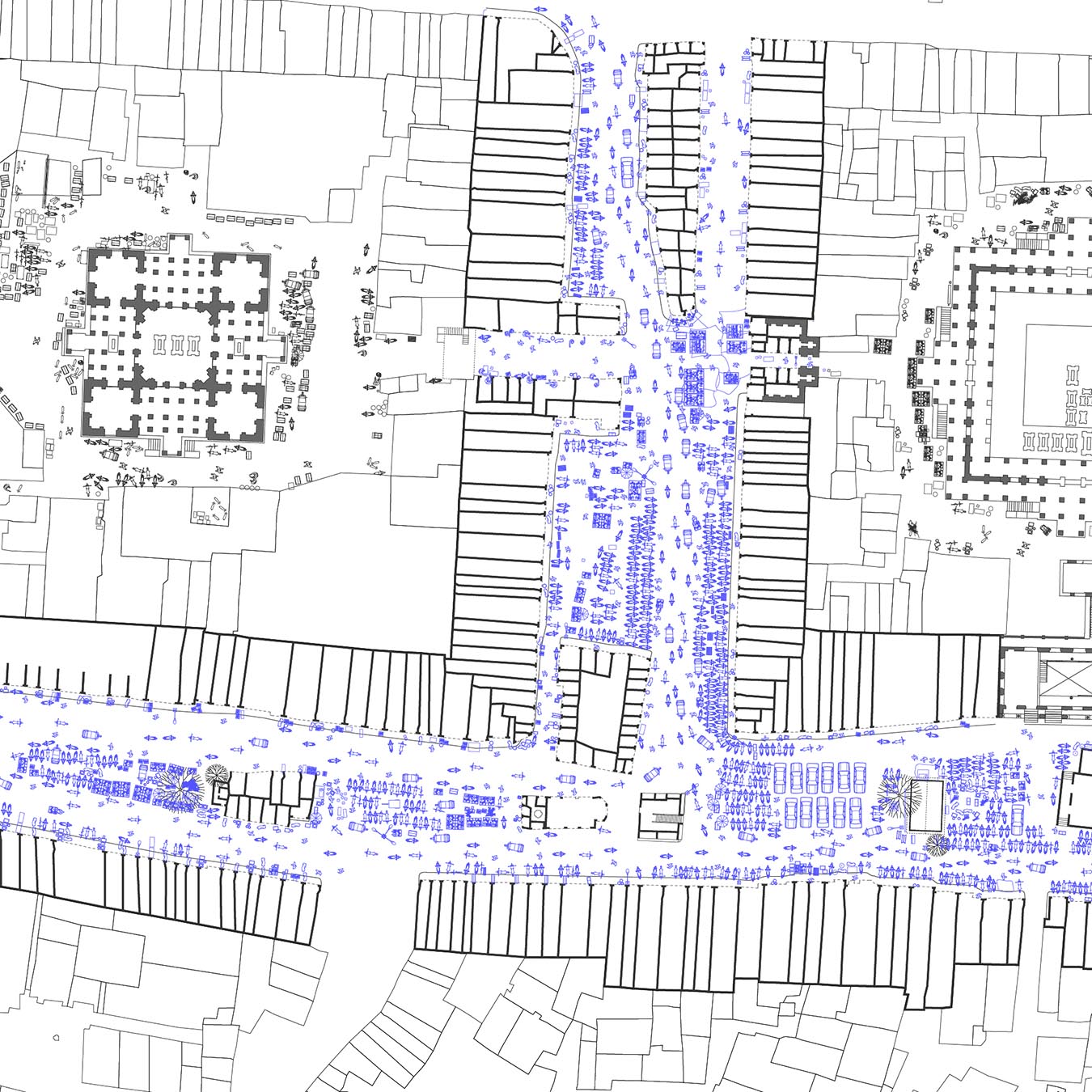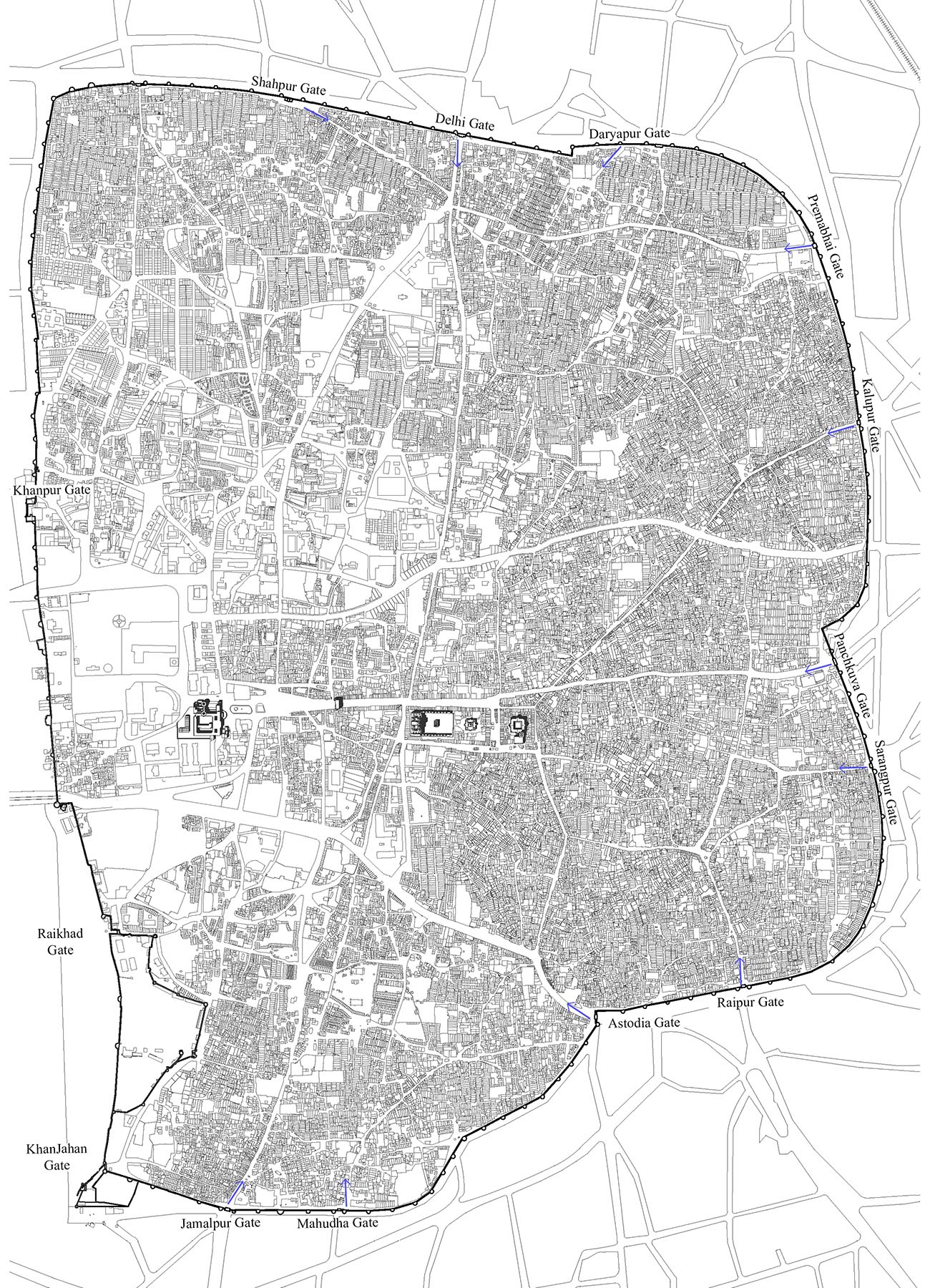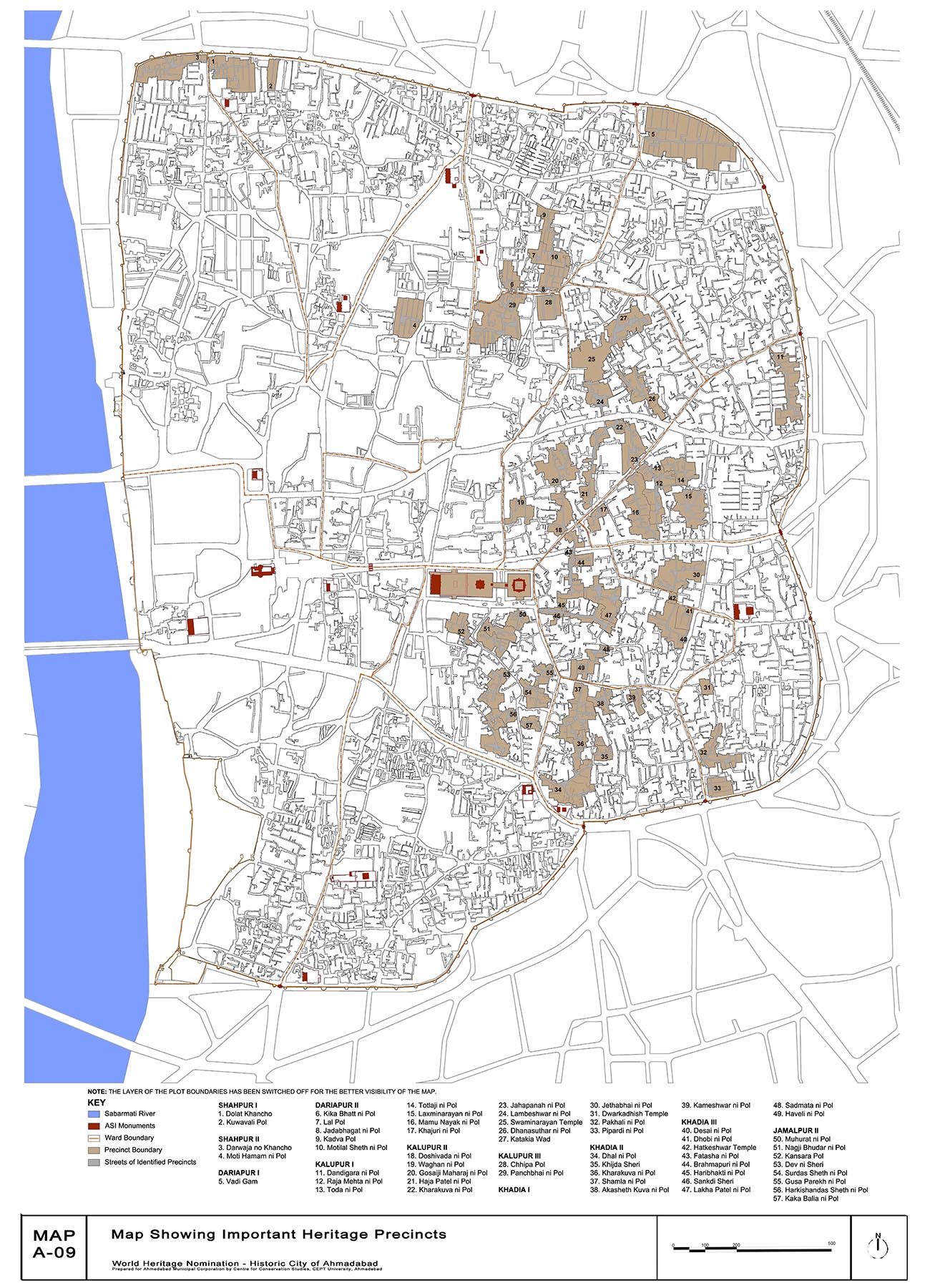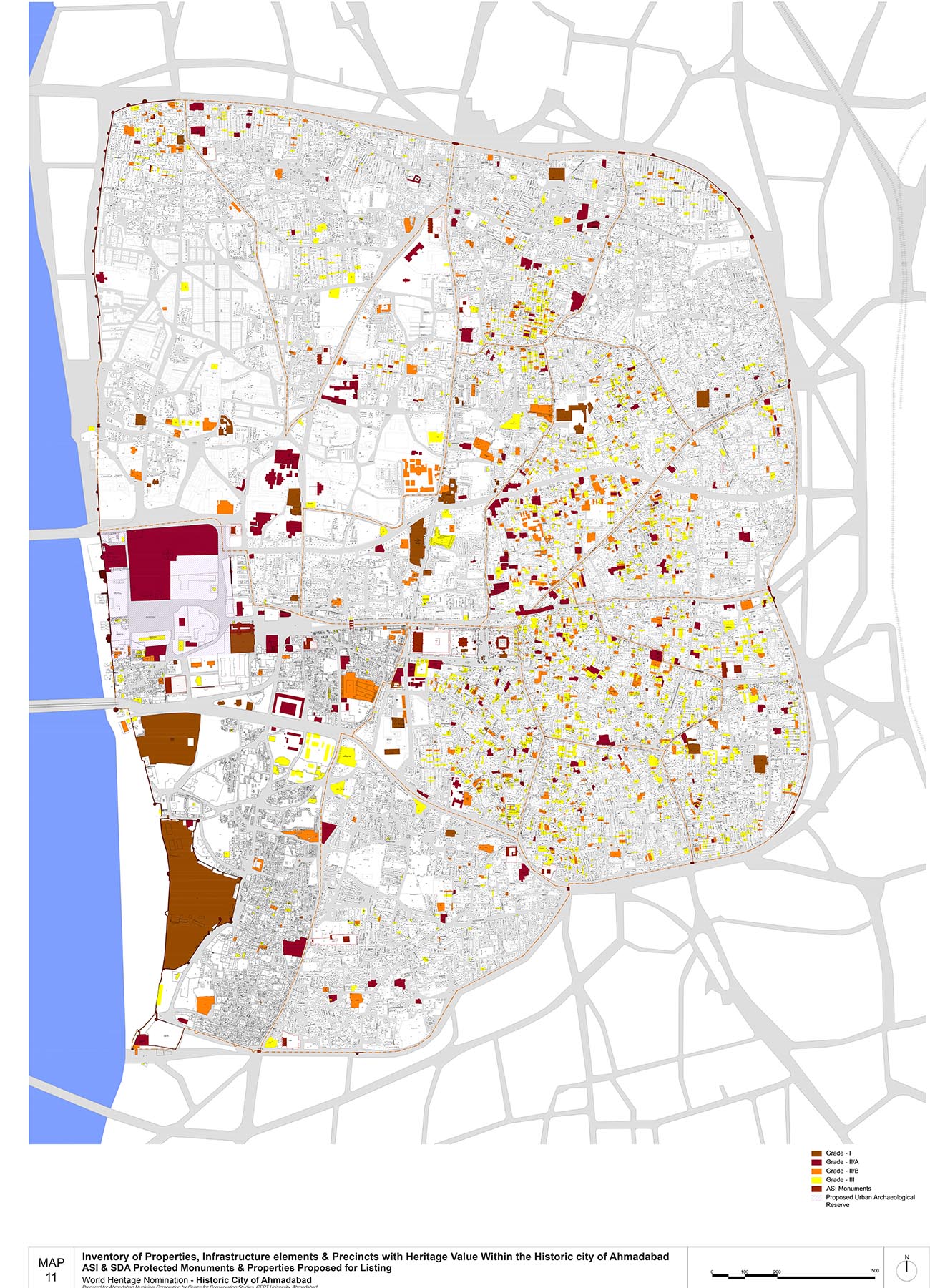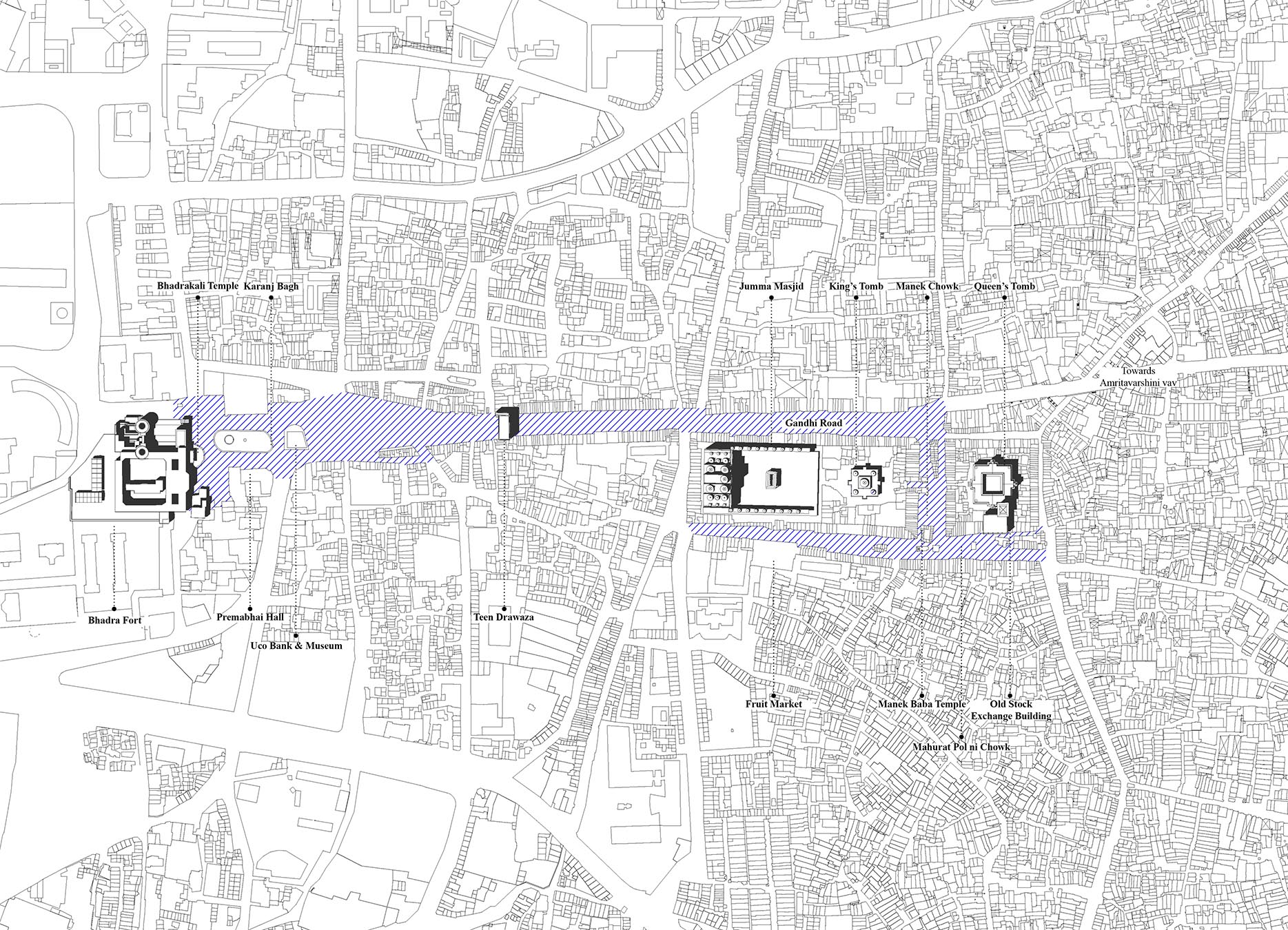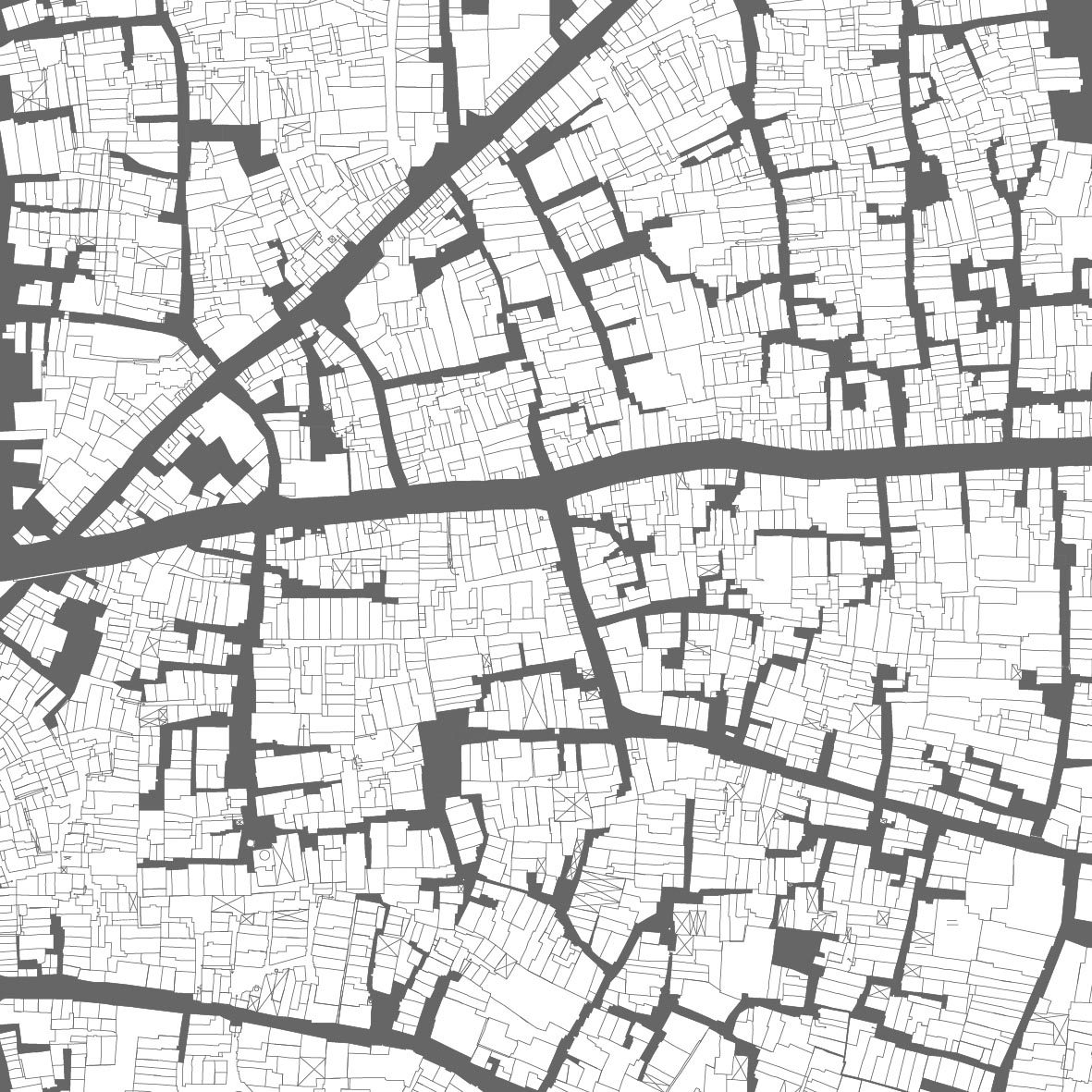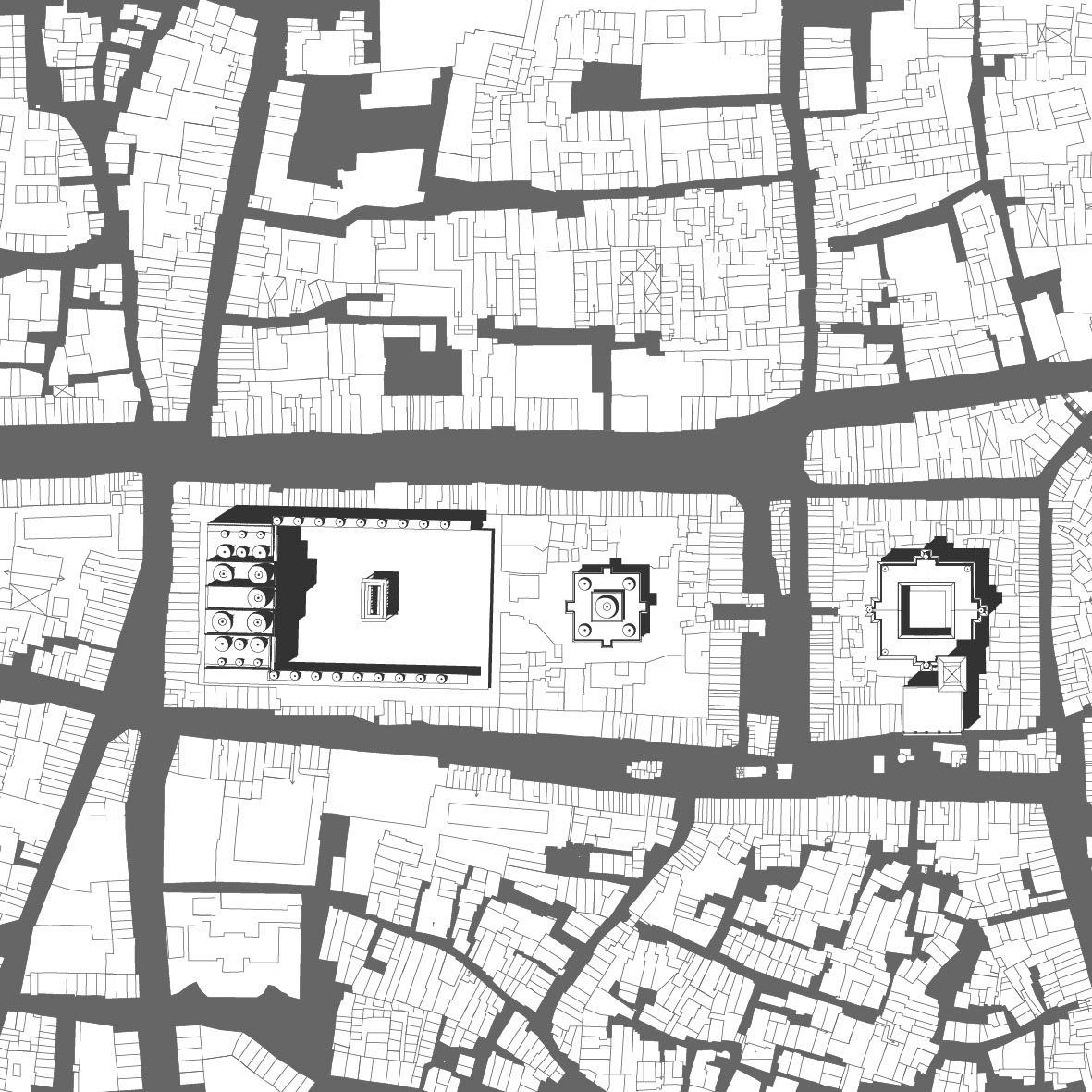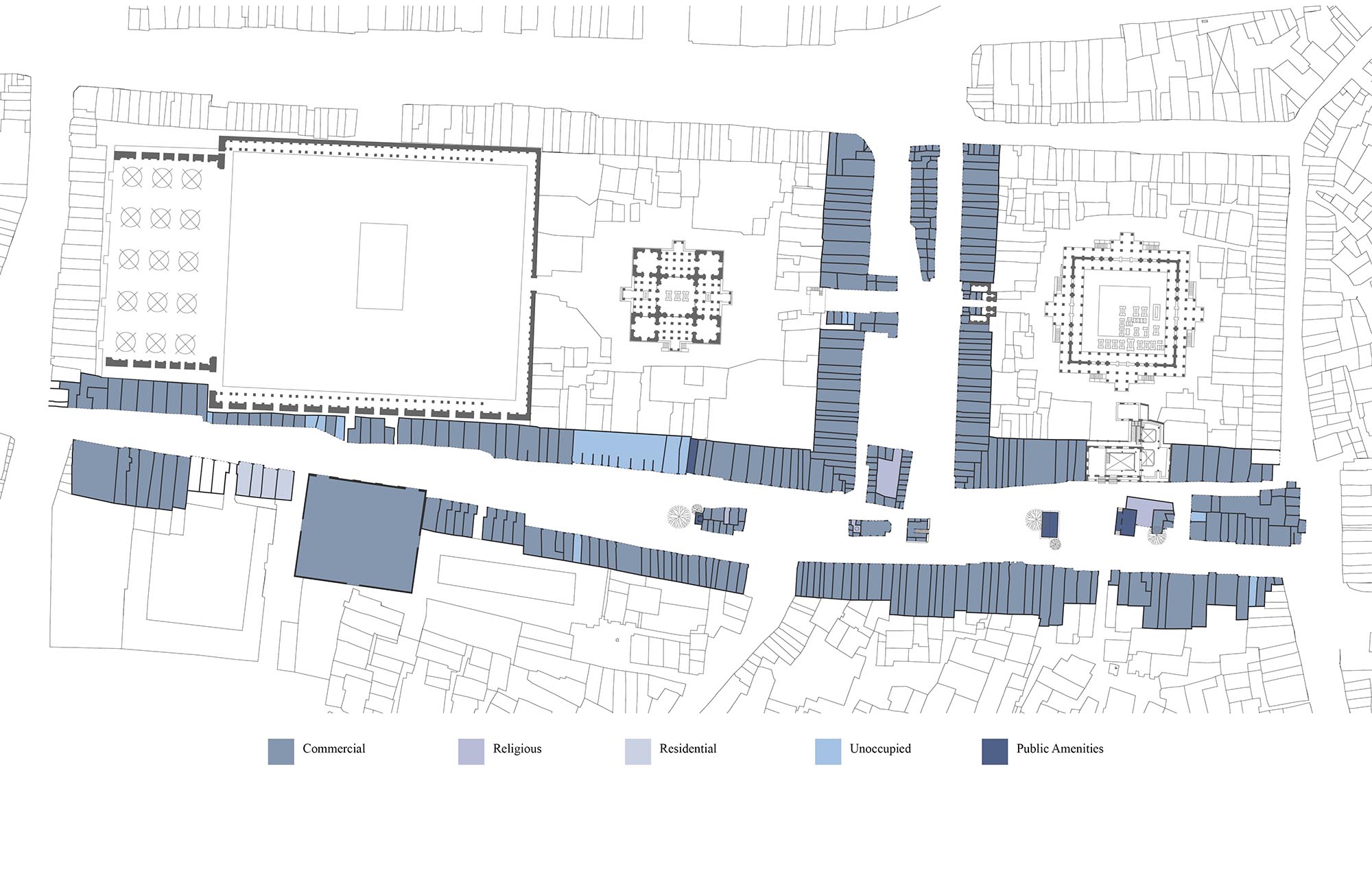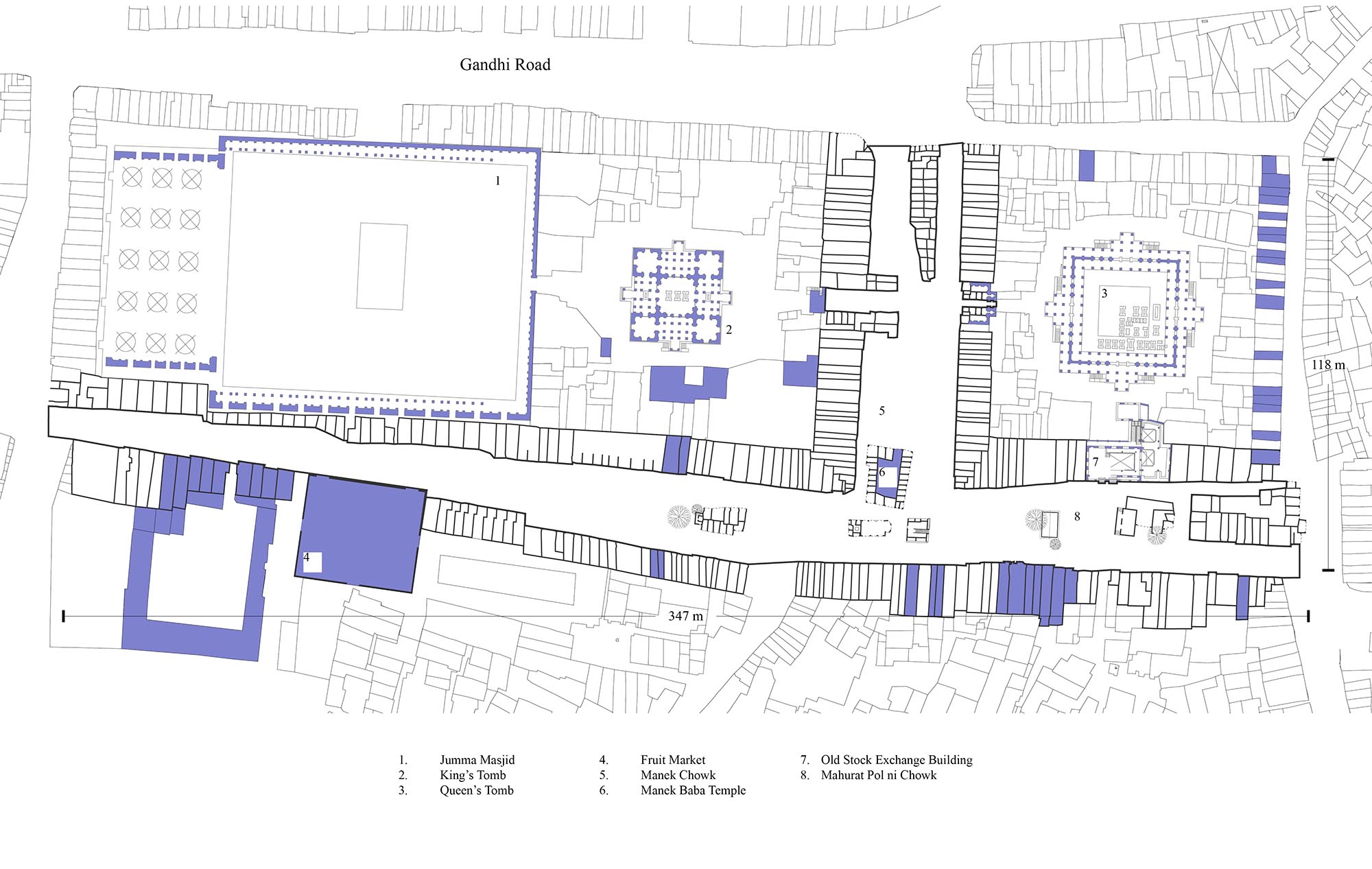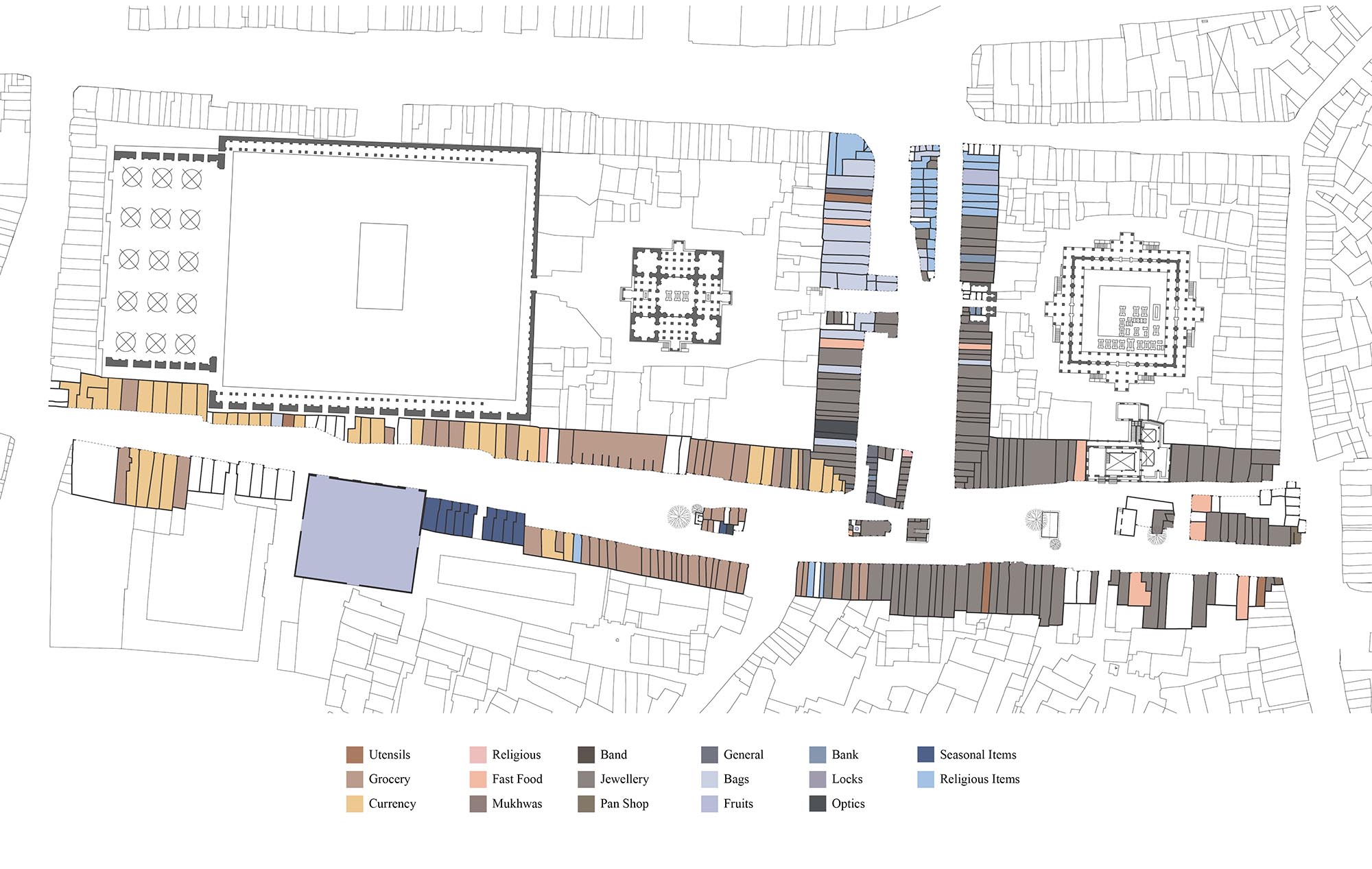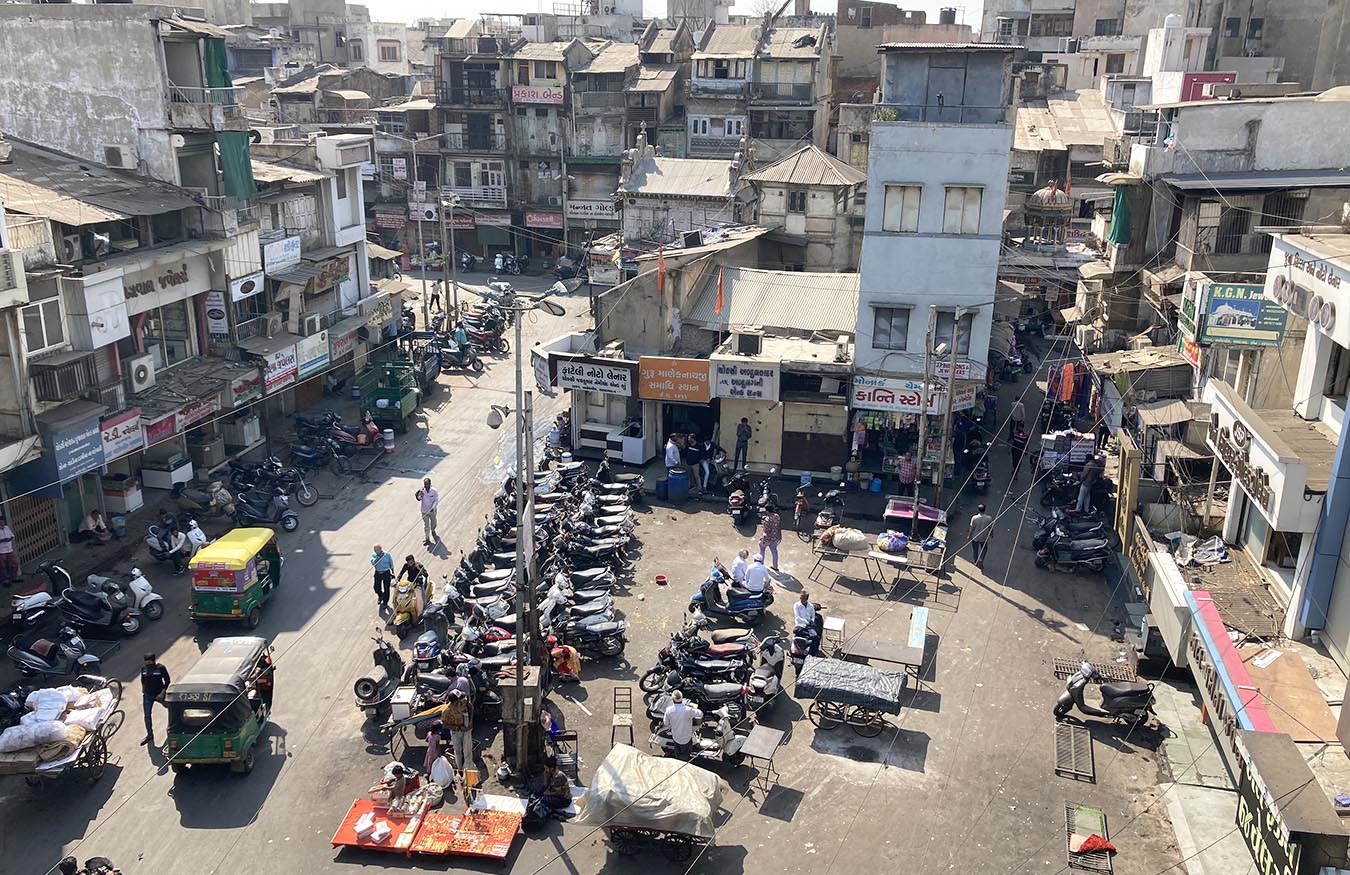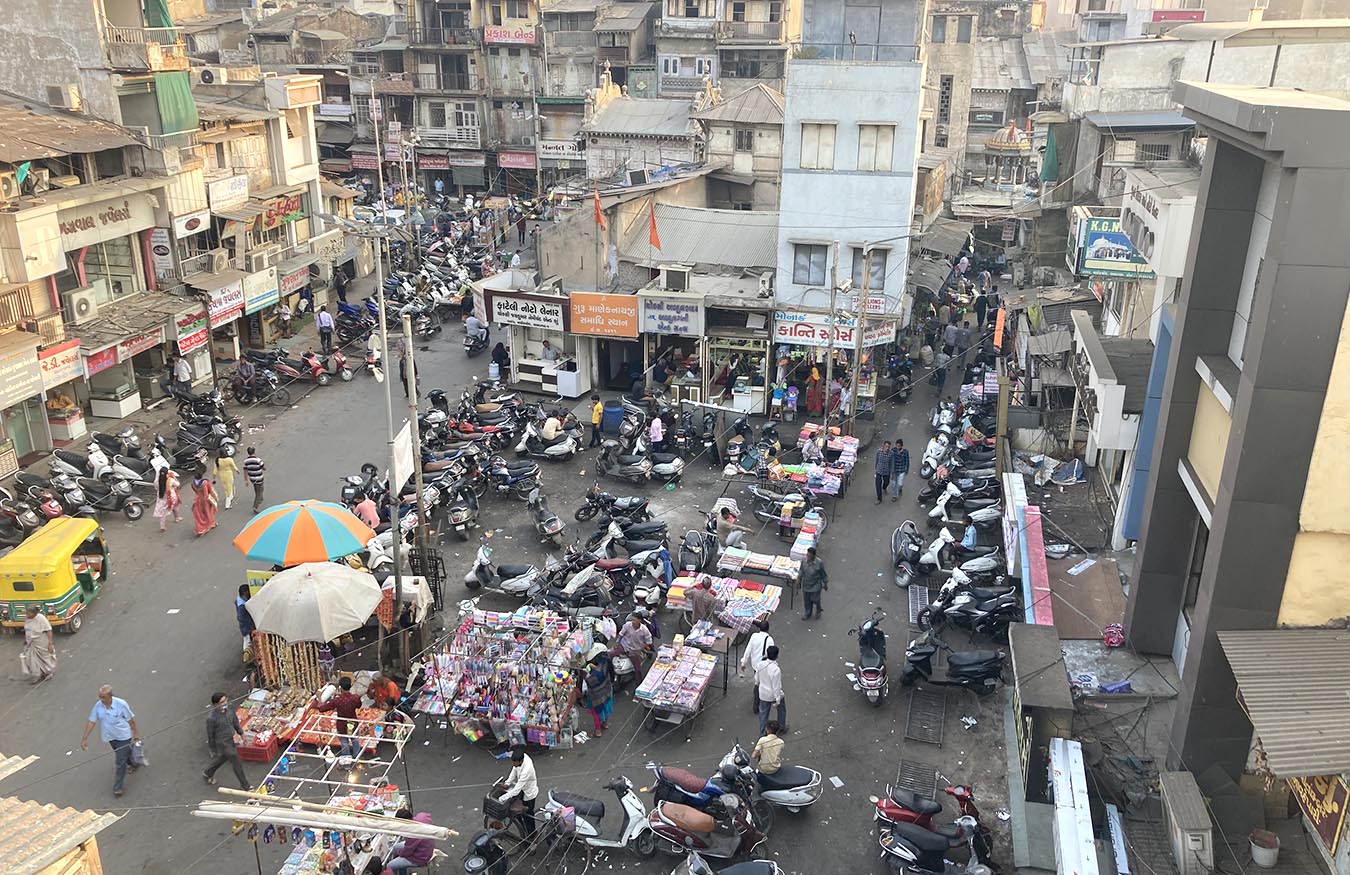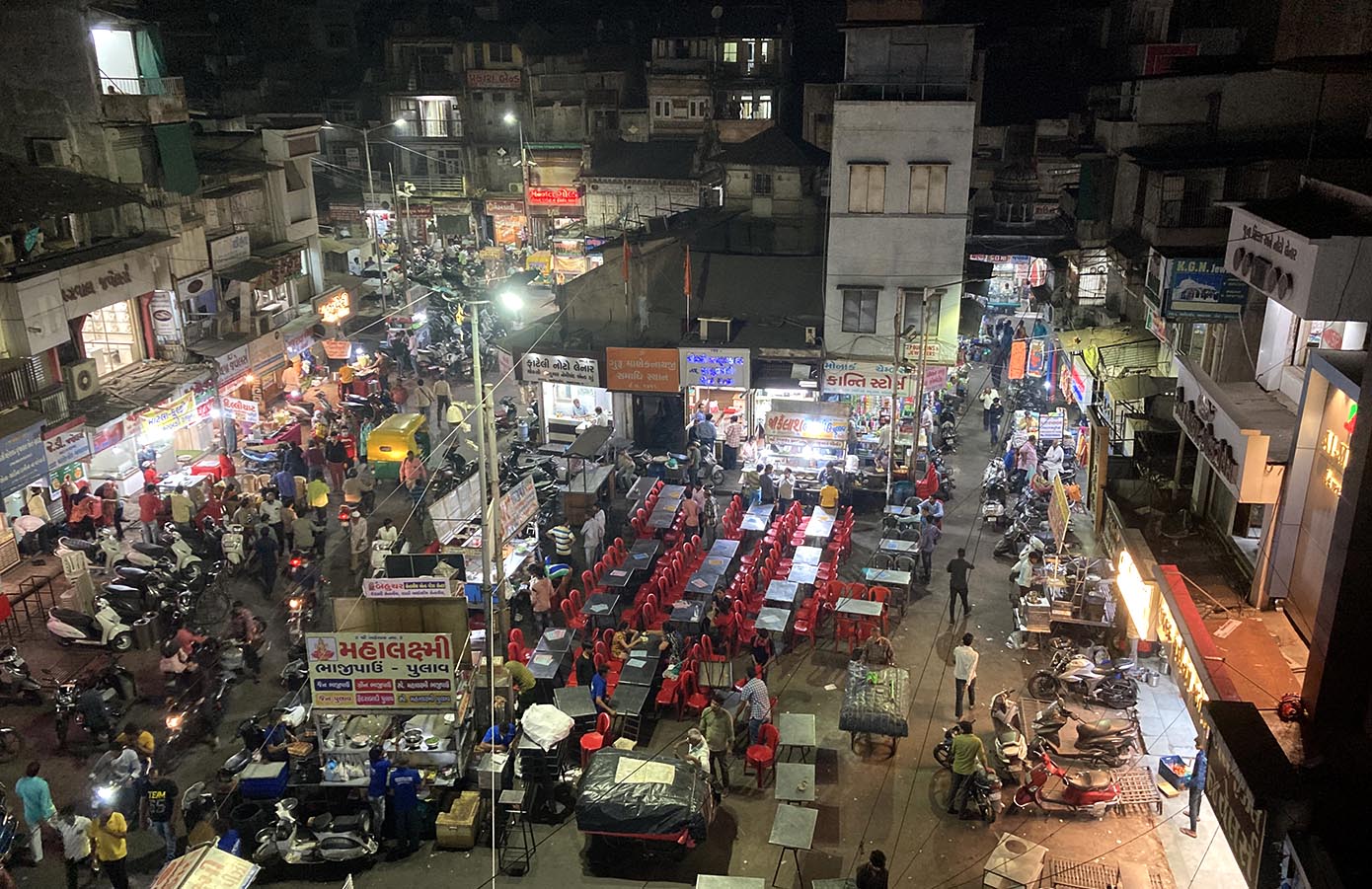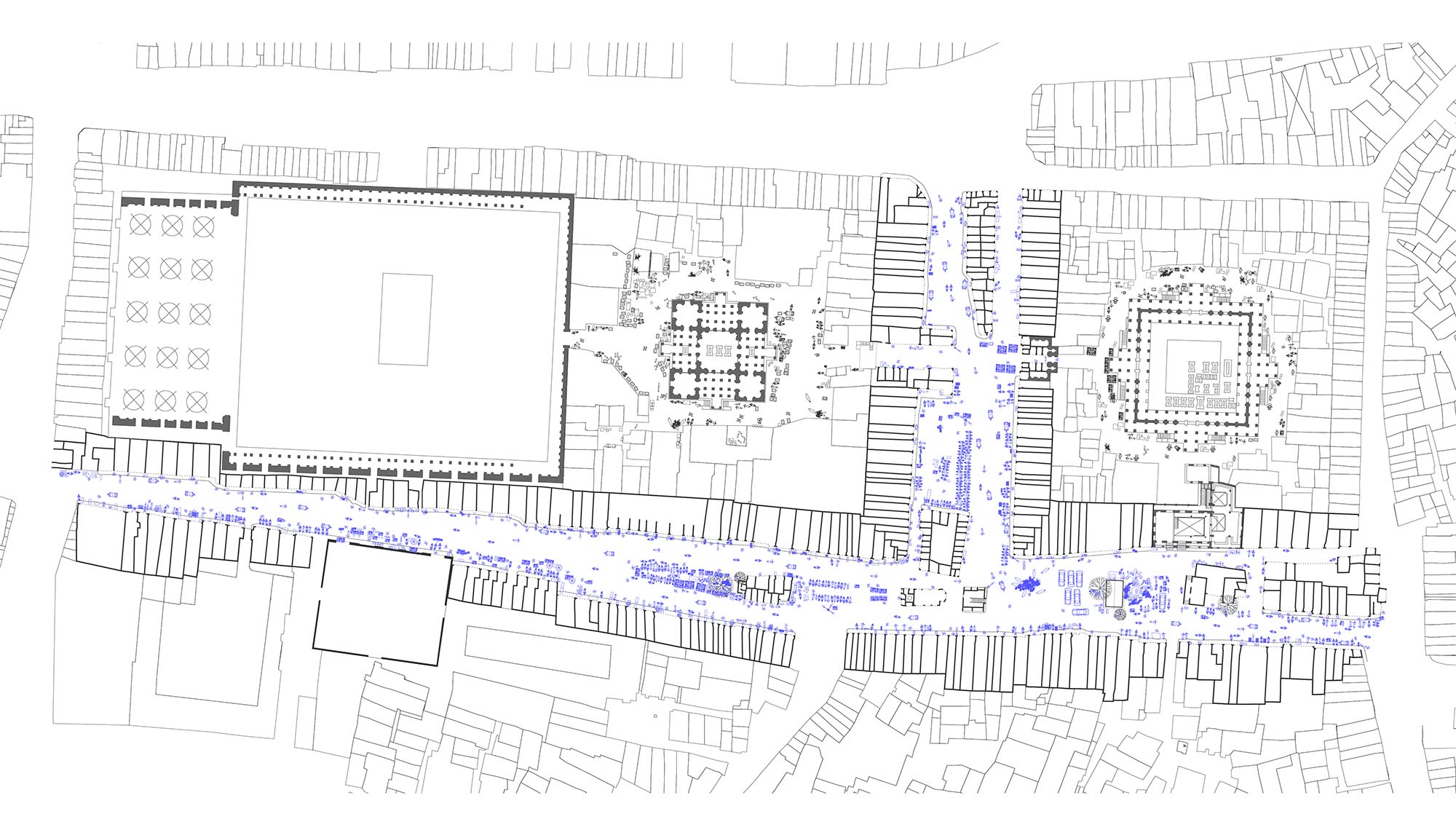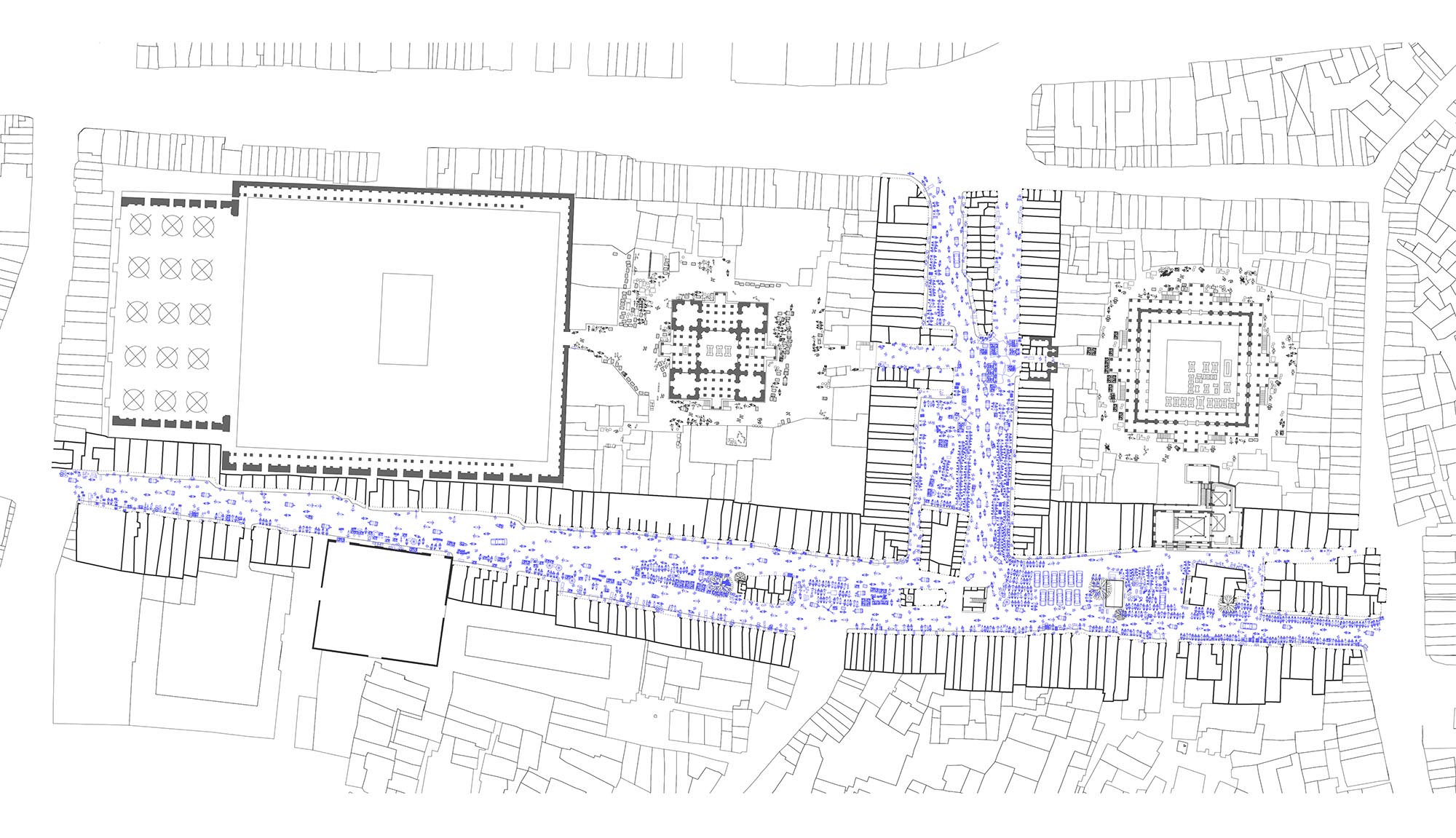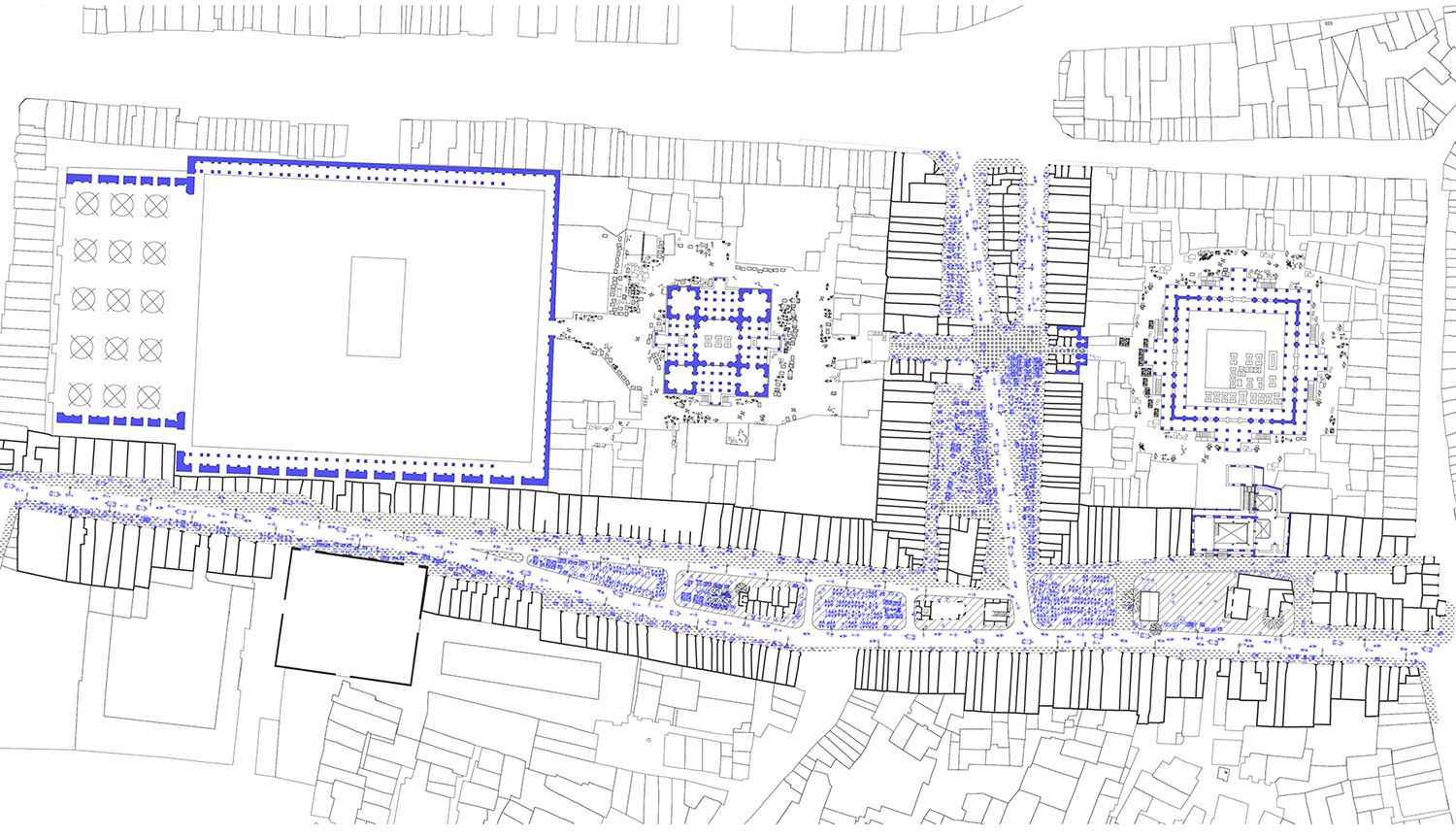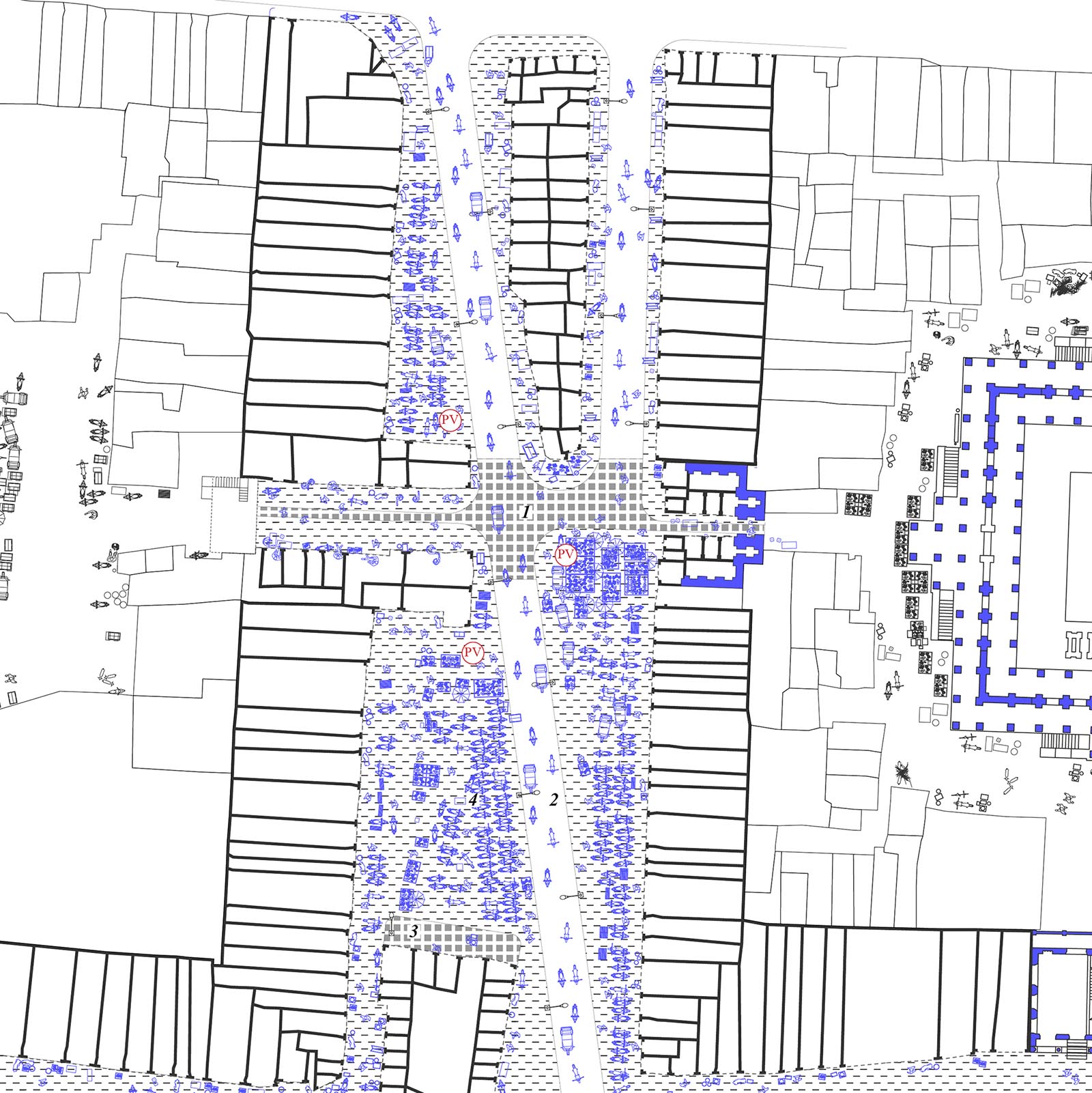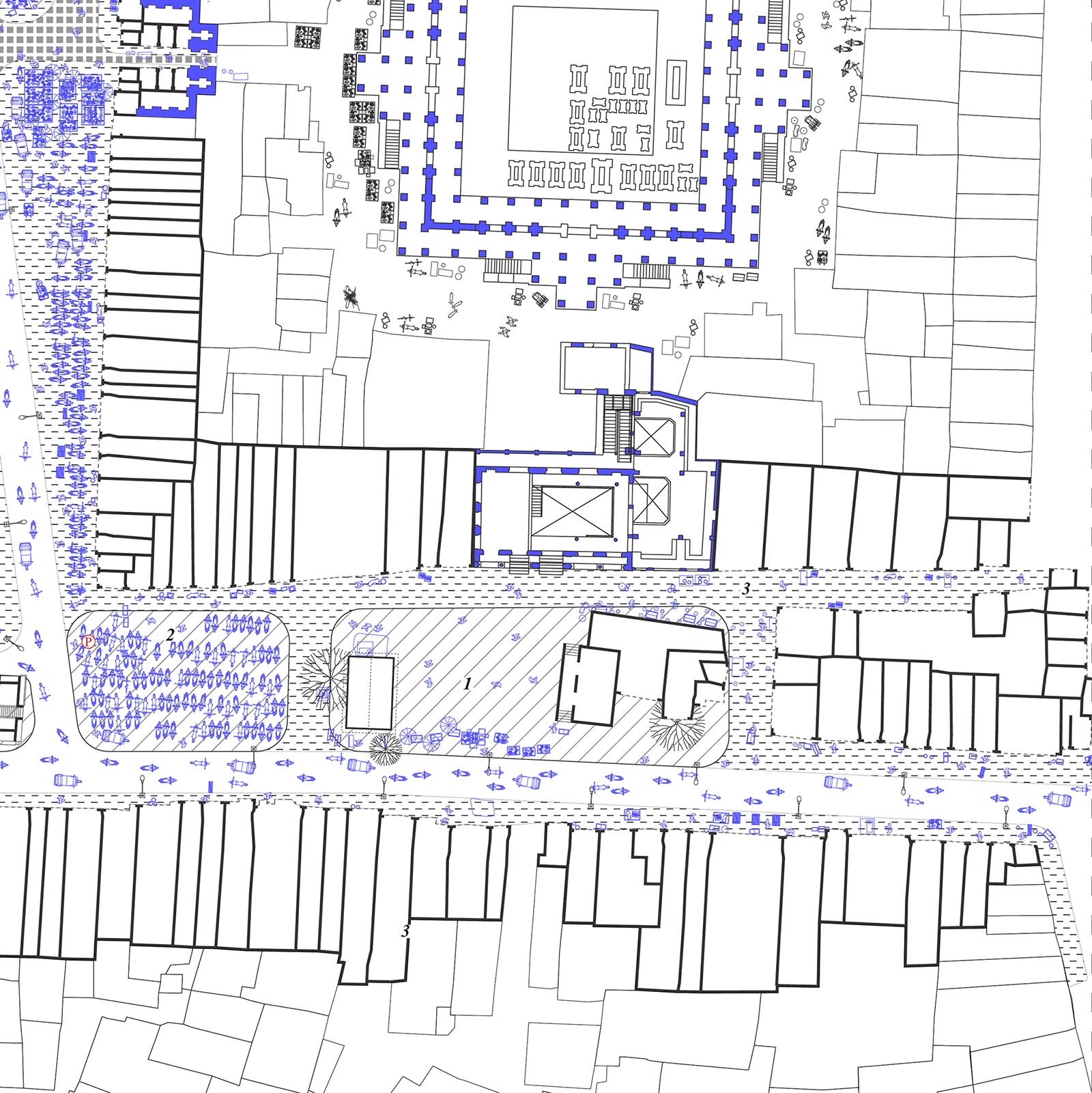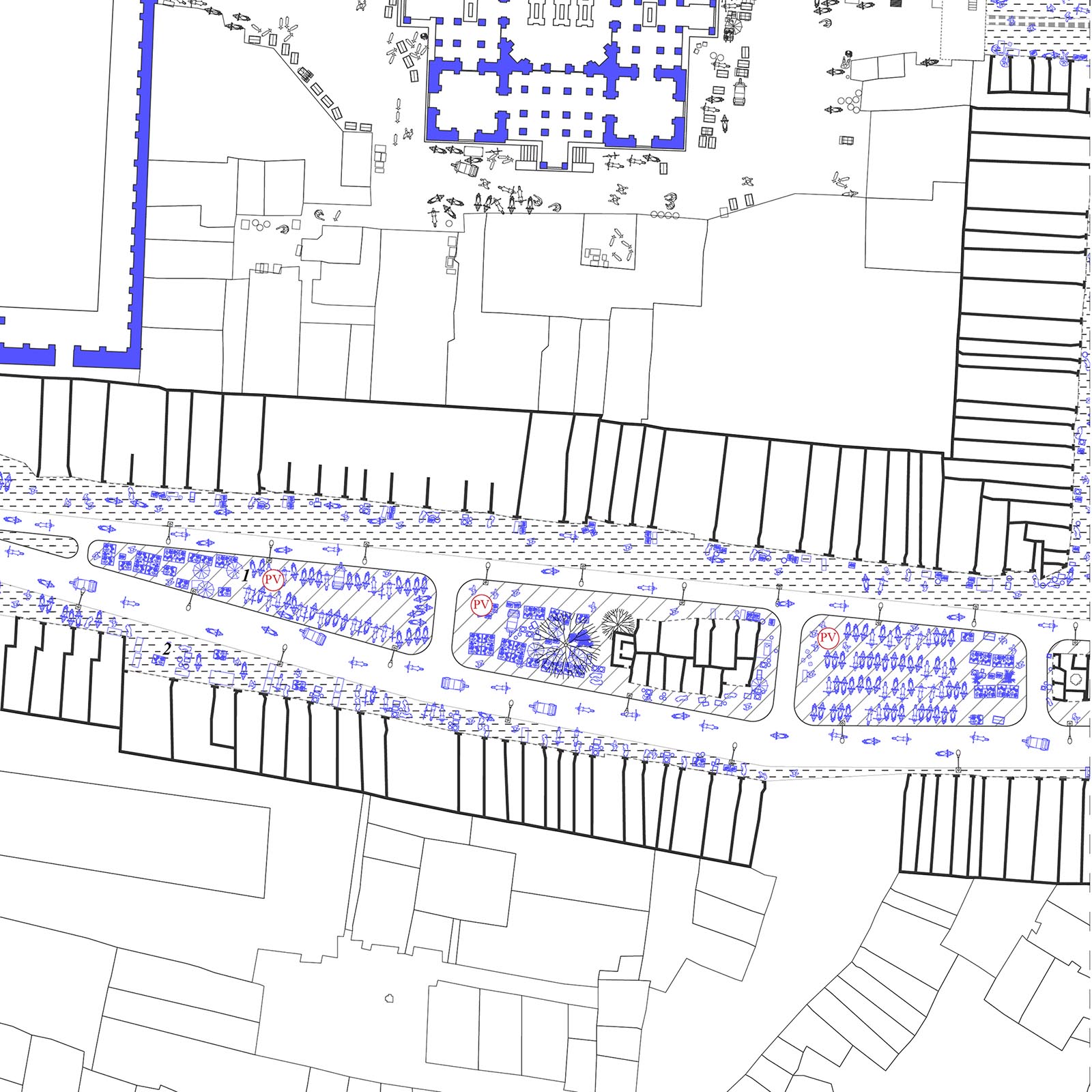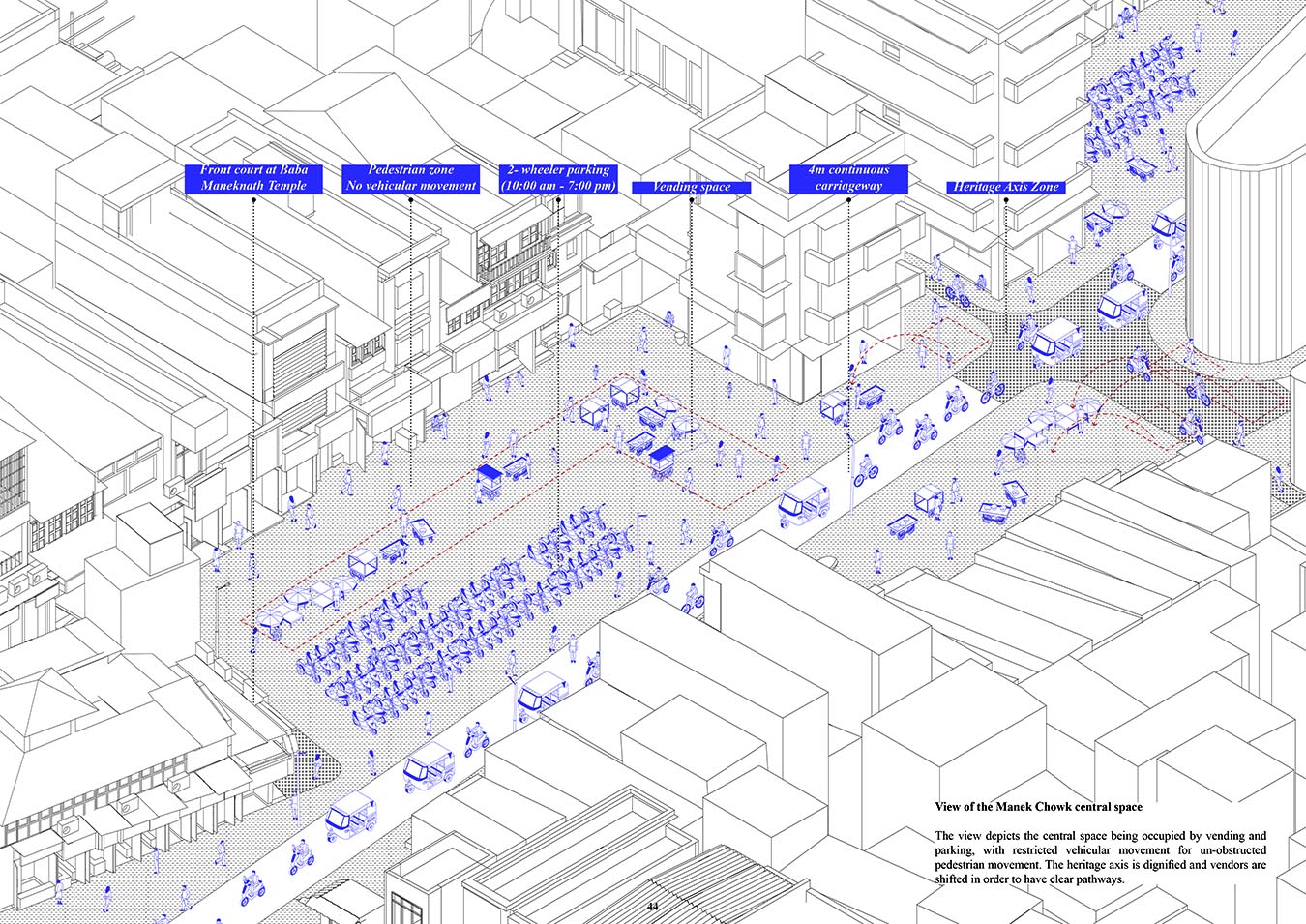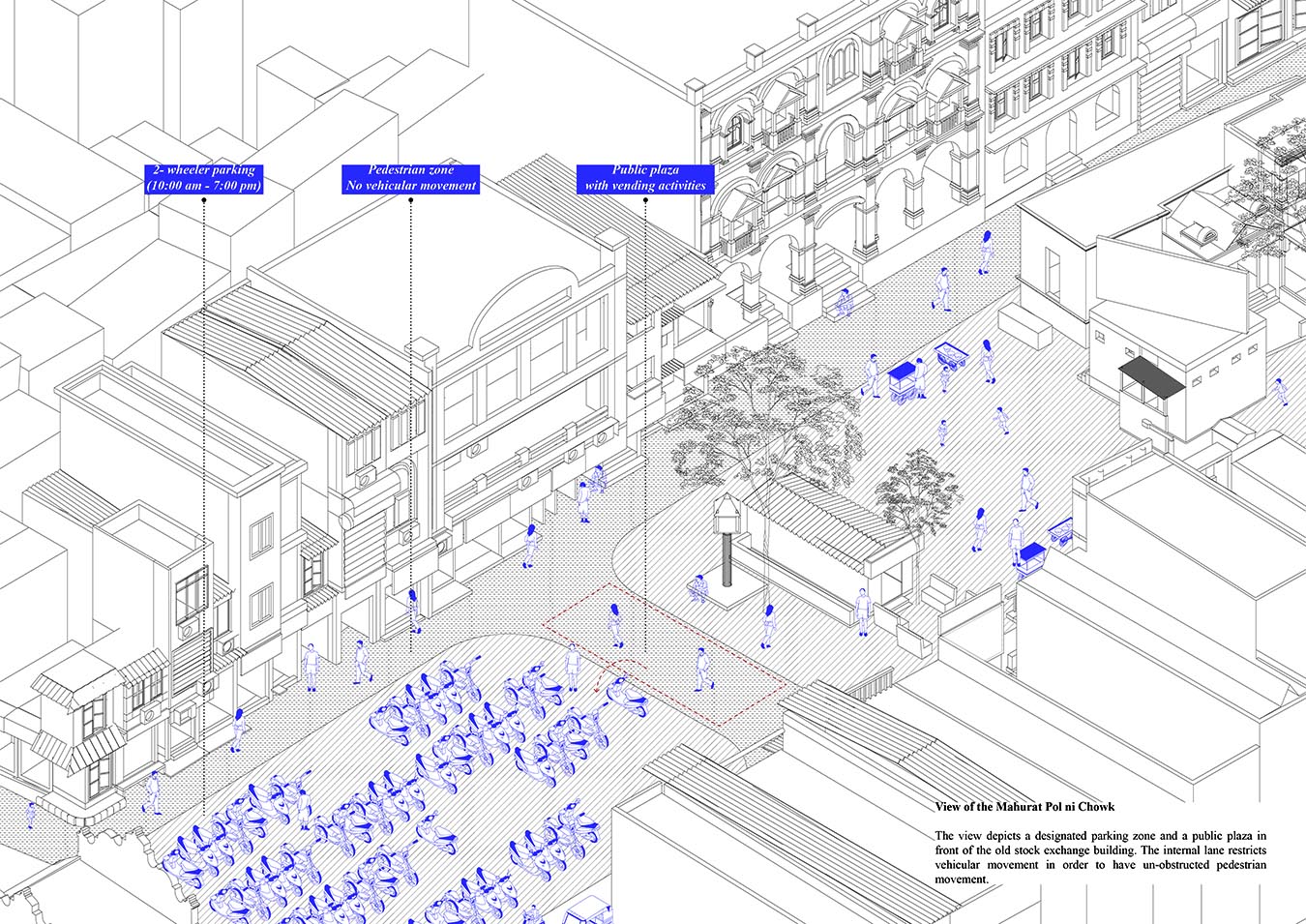Ahmedabad city grew around a historic urban core. It dates back to the 11th century, has a rich history of commerce and culture and is home to the Pol house architecture. The walled city also has several Indo-Islamic monuments, with around 28 monuments recognised by ASI (Archaeological Survey of India) as monuments of national importance. As a result, it got recognised by UNESCO as a World Heritage site in 2017, attracting immediate global attention. Towards heritage protection, multiple attempts of conservation and enhancement, such as the establishment of Heritage Cell within AMC have taken place. Within the Heritage Cell, many actual projects such as the restoration of Tankshal- ni Haveli, Vadaj stepwell and many more along with a few public space improvement projects such as – the Bhadra Fort Revitalization Project (November 2014), and the recent project of Dhal ni Pol revitalisation have taken place. Several efforts and strategies towards building conservation and public areas have been made through regulations and LAP mechanism1 (2014).
However, the National Institute of Urban Affairs reported in 2015 that efforts to preserve our heritage have been inadequate and severely limited. Projects aimed at improving public space, are required for better functioning of the walled city. Therefore, this DRP will demonstrate a Local area plan for the Manek Chowk precinct, one of the most important, and central public space. Describing further, it is one of the oldest and most well-known mercantile squares and is flanked on opposite sides by two historical landmarks – the king’s and queen’s tombs (Raja and Rani-no-hajiro). Manek chowk precinct also has the Jumma Masjid – one of the largest Mosques in the city and another landmark heritage building, the old Stock exchange building – a majestic colonial structure in Mahurat pol ni chowk south-east of Manek Chowk. In addition to its tangible heritage, the precinct has many intangible stories and legends attached to it. The Local Area Plan is a statutory planning mechanism devised to improve and enhance the existing developed areas and was adopted by the state of Gujarat in 2017 through amendments in the Gujarat Town Planning and Urban Development Act (GTPUDA) 1976. Currently, Section 76(A) provides ‘Special provisions for Local Area Plan’, which details the provisions for undertaking the Local Area Plan mechanism in Gujarat. (Gujarat Real Estate Regulatory Authority, 2018). “It is also the most visited place in Ahmedabad for its thriving market, which houses numerous commercial shops and serves as a source of income for many vendors who have been trading there for years. These factors make it one of the most contested and conflict-prone areas as several stakeholders have a long and lasting relationship with the space. It is complex also because the precinct’s civic spaces are dynamic, bringing different usage patterns throughout the day – it is a space that never sleeps.” -Mansi Shah. Over the years, the precinct’s legibility and core spaces have deteriorated significantly because of many reasons that include: old and degrading infrastructure, the addition of unsightly and incongruent elements, overlapping activities with no demarcated spaces, heritage structures hidden amidst the daily activities, and significant portion of the area is under for parking. The challenge is compounded by the fact that several stakeholders have asserted and claimed spaces with extensions or taken vending spaces in movement corridors causing tensions and constant movement conflicts.
As a result, to conserve and enhance the space (tangible and intangible heritage), these areas require a unique set of tools, approaches, and regulations for utterly specific Indian dynamics.Taking these factors into account, as mentioned earlier, the aim is to develop a Local Area Plan (LAP) for the commercial precinct of Manek Chowk to improve the area as a public space with heritage value and include different stakeholders in its productive dynamics. The focus of the study and research is limited to the planning and design of the public realm. This research will provide an illustrative example and broadly look at the following considerations for improvement:
1. Transport management of the area
2. Vending and parking organisation
3. Public spaces and its quality
4. Accessibility (physical and visual) of heritage structures



